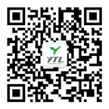 An energy meter is a measuring device that records electric power data and power consumption. According to the different forms of power supply, there are two types of energy meters: AC energy meters and DC energy meters. We usually use AC energy meters in residential households, factories, and commercial areas. On the other hand, DC energy meters are primarily used in DC screens, communication base stations, photovoltaic power generation, and other related fields.
An energy meter is a measuring device that records electric power data and power consumption. According to the different forms of power supply, there are two types of energy meters: AC energy meters and DC energy meters. We usually use AC energy meters in residential households, factories, and commercial areas. On the other hand, DC energy meters are primarily used in DC screens, communication base stations, photovoltaic power generation, and other related fields.
DC energy meters and AC energy meters are two different types of meters, with their primary distinctions lying in the nature and principles of measuring current. The following will detail the differences between these two meters.
1. Different measurement principles.
DC energy meter: The DC energy meter primarily measures electrical consumption by measuring the direct current flowing through the circuit. It is based on the principle of an ammeter, which calculates the current intensity by measuring the voltage drop across a resistor. The measurement range of DC energy meters is typically from tens of milliamperes to hundreds of amperes.
AC energy meter: The AC energy meter is used to measure the electricity consumption in an AC circuit. It is based on the principle of electromagnetic induction. Active power is calculated by measuring the phase difference and magnitude of voltage and current. The measurement range of AC energy meters is typically from tens of volts to hundreds of volts.

2. Different structures and appearances.
DC energy meter: The DC energy meter typically has a smaller dial with scale lines and corresponding readings. It typically has a red pointer to indicate the current intensity. In a DC energy meter, the current passes through a fixed resistor and generates a fixed voltage drop across it that is proportional to the current intensity. Therefore, the current intensity can be calculated by measuring the voltage drop.
AC energy meter: The AC energy meter typically has a larger dial with scale lines and corresponding readings. It typically has a rotating aluminum disk to indicate the current power consumption. In an AC energy meter, the phase difference and magnitude of voltage and current are converted into a rotating torque through electromagnetic induction. This driving force causes the aluminum disk to rotate. The active power can be calculated by measuring the speed and direction of the disk's rotation.
3. Different usage environments.
DC energy meter: DC energy meters are primarily used for measuring the electricity consumption of DC power sources like batteries and solar panels. In a DC circuit, the current flow remains constant, which allows a DC energy meter to be directly utilized for measuring purposes.
AC energy meter: AC energy meters are primarily used for measuring the electricity consumption of AC power sources like household appliances and industrial equipment. In an AC circuit, the direction of the current changes constantly, which means that an AC energy meter is required for measuring it. When using an AC energy meter, it is important to pay attention to safety issues because high voltage can pose a danger to the human body.
 4. Different error characteristics.
4. Different error characteristics.
DC energy meter: The error characteristics of DC energy meters are relatively stable because their measurement principle is based on directly measuring the voltage drop across a resistor. Therefore, the error of direct current (DC) meters is typically determined by the errors of the resistors and voltmeters used with them.
AC energy meter: The error characteristics of AC energy meters are influenced by multiple factors, including the amplitude of voltage and current, phase difference, and circuit impedance. Therefore, the errors of AC energy meters are usually larger than those of DC energy meters, and may be affected by non-linear factors. When choosing an AC energy meter, suitable accuracy levels and measurement ranges should be selected according to the actual application scenarios.
5. Different prices and maintenance.
DC energy meters and AC energy meters also differ in terms of price and maintenance. Generally, the prices of DC energy meters are relatively low due to their simple structures and easy maintenance. Alternating current (AC) meters, on the other hand, are more expensive due to their complex structure and require regular calibration and maintenance. Moreover, because of the more complicated measuring principle of AC energy meters, a higher level of technical expertise is needed for their installation, commissioning, and maintenance.
DC energy meters and AC energy meters measure different properties of power consumption, and their principles and logic are completely different. There are many similarities in the additional functions of the meters, such as data collection, remote communication, and event alarms. Whether it is a DC energy meter or an AC energy meter, attention should be paid to voltage specifications, current ranges, accuracy levels, product certifications, IP protection ratings, weather resistance, installation methods, etc., and suitable energy meters should be selected based on the application environment and functional requirements.

 English
English 简体中文
简体中文














